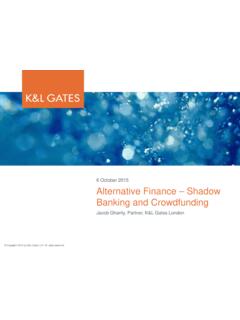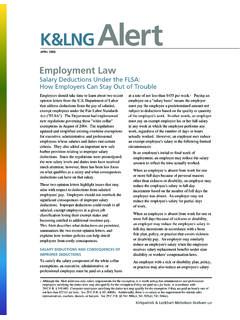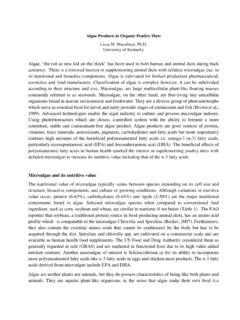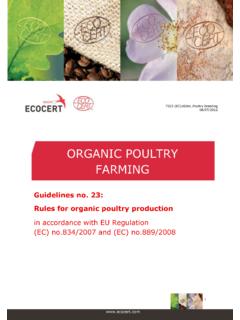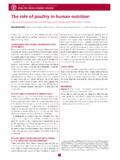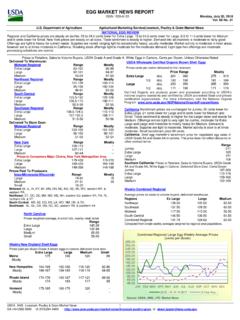Transcription of FSIS and FDA Policy on the Definition of “Natural” …
1 February 2007 :Robert G. Gates comprises approximately 1,400 lawyers in 22 offi ces located in North America, Europe and Asia, and represents capital markets participants, entrepreneurs, growth and middle market companies, leading FORTUNE 100 and FTSE 100 global corporations and public sector entities. For more information, please visit Food and Drug AlertFSIS and FDA Policy on the Defi nition of natural and the Qualifi cation for Use on Food and Meat/Poultry LabelingWhat does it mean to be organic or natural ? The answer is different depending on whom you ask. Perhaps because many people have their own ideas about what the terms organic and natural should mean, the regulatory conditions for the terms have been diffi cult to pin down precisely.
2 Nevertheless, as public health awareness has increased and consumers demand healthier foods and the terms organic and natural have gained traction and appeal with the public, the demand for greater clarity in this area has United States Department of Agriculture s Food Safety and Inspection Service ( FSIS ) held a public meeting on December 12, 2006 in anticipation of rulemaking to discuss the voluntary claim natural and to delineate the conditions under which the claim can be used on the labels of meat and poultry products. 1 The comment period for this meeting has been extended to March 5, This proceeding was initiated in part in response to a petition fi led by the Hormel Foods Corporation.
3 The Food and Drug Administration ( FDA ) has also received a petition from the Sugar Association to codify the conditions under which a natural claim can be Market Trend Movement of Food and Meat/Poultry Industry to natural and organic Labeling to Meet Consumer DemandsConsumer interest has steadily driven the expansion of the natural and organic markets. According to the National Marketing Institute, 63% of consumers in 2004 reportedly preferred natural foods and Food sales in natural product stores reached a reported $ billion in The organic food industry grew to reach $ billion ( of total food sales)
4 In consumer sales in According to Iowa State University Agricultural Marketing Resource Center, The combination natural / organic food category has grown signifi cantly since 1990, increasing four-fold in the decade after and averaging 14% annual growth (compared to the historic growth rate of 4% in the overall food industry). 71 71 Fed. Reg. 70,503 (December 5, 2006).2 72 Fed. Reg. 2257 (January 18, 2007).3 See Letter from Sugar Association to FDA, dated February 28, 2006 (Docket No. 2006P-0094), available at FDA has responded with a letter stating that it has not been able to reach a decision within 180 days.
5 See FDA letter to the Sugar Association, dated August 22, 2006, available at E. A. Sloan, Gourmet & Specialty Food Trends, Food Technology 58 no. 7 (2004): Id. at OTA s 2006 Manufacturer Survey, organic Industry Overview, available at (last visited December 7, 2006). By way of comparison, in 1997, the organic food industry comprised $ billion in consumer sales, or of total food J. Norwood, natural Products, Agricultural Marketing Resource Center, Iowa State University, January 2004, available at (last visited December 8, 2006).
6 February 2007 | 2 Food and Drug AlertAs this indicates, the organic and natural food producers positioned themselves in a signifi cant and growing niche in the overall food market. Before investing in processing facilities and product development, these companies relied on certain FDA and USDA/FSIS interpretations and Policy determinations of when and how the claims should be used based on regulations and guidances, interpretations and Policy determinations that have, at least in the use of natural , become increasingly confusing and of Clarity Creates ConfusionThis in turn has led to growing tension between government agencies that are mandated to protect the public from false and misleading claims and an industry that believes it has relied in good faith on established regulations and guidances in providing the consumer with a quality product with appropriate and accurate natural claims.
7 The primary issue has been how to clarify the regulatory Definition in a way that makes sense to the public (both the consumer and the industry). Further, the government needs a clear defi nition such that agency staff can consistently determine whether a natural claim is accurate. An ill-defi ned term loses relevance to the consumer and accuracy of claim is difficult to ascertain for terms with amorphous boundaries. For companies that have invested millions of dollars in processing facilities and product development, ambiguously defined terms and conditions of use, and resulting inconsistent application of enforcement, have proven extremely costly.
8 Various segments of the industry have requested clarity on the terms, and the agencies are beginning to to 2002 and the implementation of USDA National organic Standards, the defi nition of and standards for organic varied widely. organic certifi cation was voluntary in most states, and the requirements for organic production and handling were different from certifying agency to agency. In 2002, USDA set forth the organic standards that must apply to all agricultural commodities or products, whether raw or processed, including any commodities or products derived from livestock.
9 As of October 21, 2002, these products must be in compliance with the national organic standards in order to be labeled organic . USDA organic standards, as mandated by the organic Foods Production Act of 1990, were developed and are administered by USDA s National organic Program. The regulations limit the use of organic on products for sale in the to ingredients and production methods that have been verifi ed by a USDA-accredited certifi cation agency as meeting USDA standards for organic production. The organic standards offer a uniform national defi nition for the term organic , and they detail the methods, processes, practices, and substances that can be used in producing and handling organic crops and livestock, as well as processed products.
10 The organic standards also establish clear organic labeling , the organic defi nition has been clarifi ed in a manner which seems to work suffi ciently well from both a consumer and industry term natural , however, is an entirely different matter. Various agencies have attempted to clearly defi ne natural over the past 20 years. In the mid-1970s, the Federal Trade Commission ( FTC ) proposed to defi ne natural foods as those with no artifi cial ingredients and only minimal processing. 8 FTC abandoned this effort in 1983,9 noting that it would still scrutinize natural claims on a case-by-case basis.

